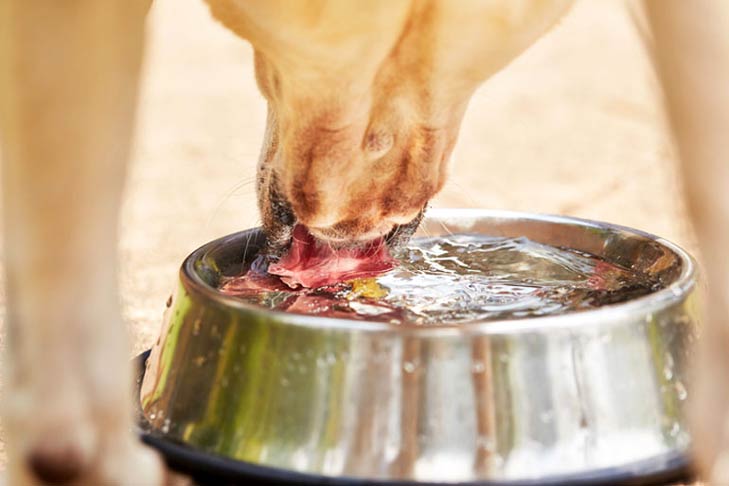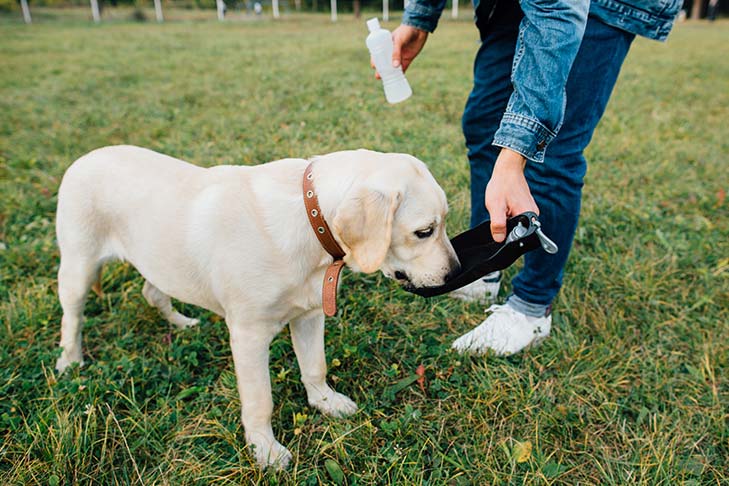When children or adults have mild diarrhea or dehydration, they can be given an electrolyte solution called Pedialyte. It can aid in rehydrating and replenishing electrolytes, which frequently improves the feeling of a sick person with mild dehydration.
Therefore, if your dog exhibits the same symptoms, can you administer Pedialyte to them as well? Is Pedialyte even safe or effective for dogs?
The short answer is that Pedialyte is probably safe for most dogs in small doses, but there are many reasons why you should not give it to your dog. Your first action should be calling your vet instead.
Most significantly, there are currently no scientific studies supporting its use in dogs. There is simply no proof that Pedialyte is any more advantageous to a dog who is only mildly dehydrated than just drinking water.
Additionally, there are too many risks involved in administering Pedialyte to your dog, who might end up getting worsened by it.
Clubs Offering:
Dogs become dehydrated when they lose more fluid than they are consuming. Dogs are mammals just like the rest of them, and like all mammals, they need water to keep themselves healthy. In fact, water is essential for almost all vital bodily processes, such as lubricating joints, protecting internal organs, promoting digestion, and controlling body temperature. When we think of nutrition, we generally think of food. However, water is a crucial component that is required in order for the cells in your dog’s body to absorb nutrients.
A dog’s body naturally gains and loses water throughout the course of the day. Normal water loss is caused by breathing, panting, urinating, defecating, and paw evaporation. Your dog makes up for this loss by eating and drinking.
Blood flow and fluid volume are reduced in a dog’s body when normal fluid intake is unable to compensate for water loss, which reduces oxygen delivery to organs and tissue. Dogs who become dehydrated also lose electrolytes like sodium, chloride, and potassium. These minerals have important functions in the body:
In the most serious cases of canine dehydration, the severe shortage of fluids can even lead to kidney and other organ failure and to death.

Dehydration can result from a dog not having adequate access to water or refusing to drink enough of it. Make sure to leave enough water for your dog whether you’re at home or only gone for a short while.
A dog may also become dehydrated from sudden episodes of vomiting and diarrhea, heat stroke, or illnesses and a fever. Dehydration may be more likely in toy dog breeds, senior dogs, nursing mothers, and puppies. Dehydration in dogs can occasionally be a sign of a more serious issue, such as diabetes, kidney disease, or certain cancers.
Some dogs simply won’t drink much water unless it is encouraged in them. Or they are sweating profusely while exercising outside, losing fluids as a result.
What Are the Symptoms of Canine Dehydration?
Since our dogs are unable to communicate with us when they are thirsty, how can you tell if your dog is dehydrated? By being aware of the symptoms of dehydration, dog owners can act quickly and identify potential serious medical issues before they result in life-or-death situations. According to Dr. Veterinary emergency and critical care specialist Jerry Klein states that the following are signs of canine dehydration:
The simplest way to check for dehydration is to notice a loss of skin elasticity. To test for it, Dr. Klein advises holding a small patch of the dog’s skin close to his shoulder blades, lifting it up, and then letting it go. Watch carefully as it falls back into place. The skin instantly returns to its original position in well-hydrated dogs. On the other hand, the skin of dogs who are dehydrated will take longer to recover.
When you are certain that your dog is properly hydrated, it is a good idea to test his skin first so that you can get a sense of how normal skin elasticity feels. Because their skin may not be as elastic, even under normal circumstances, owners of wrinkly breeds like Bulldogs or Neapolitan Mastiffs should take special note of this, says Dr. Klein.
Another examination is to feel your dog’s gums for stickiness and dryness. As you do so, measure the capillary refill time. Remove your finger after gently pressing it against your dog’s gums. The area where you pressed will briefly turn white in a well-hydrated dog before quickly returning to its normal pink hue. In dehydrated dogs, the capillary refill time takes much longer.

Make sure your pet drinks plenty of fresh, cool water first if you suspect dehydration, especially in hot weather. Dehydrated dogs may lose their appetite, which makes them eat less and eliminates the water content they would normally get from their food, creating a vicious cycle.
Additionally, if his body isn’t getting enough water, electrolyte-containing fluids are drawn out of the cells, leading to an imbalance that affects his organs. This means that he might need to have his electrolytes replaced. You can try giving your dog an electrolyte-enhanced liquid like Pedialyte if he is not throwing up. It’s best to check with your veterinarian for dosage recommendations.
“Take your dog to the vet right away; this is considered a medical emergency if your dog exhibits any of the above-mentioned signs of dehydration, persistent vomiting, or you suspect heatstroke,” advises Dr. Klein. “The veterinarian can administer intravenous or subcutaneous fluids to replace lost fluids as soon as possible and stop further loss. ”.
Your veterinarian will want to identify and treat the underlying condition because dehydration is frequently a sign of a more serious issue. Depending on your dog’s other symptoms, this procedure may involve x-rays, blood work, or other tests.
Pedialyte Has Been Formulated For Humans—Not Dogs
Lastly, Pedialyte is not formulated based on canine electrolyte balance. Most energy drinks for people typically contain more sodium than is recommended for dogs.
The higher level of sodium can be harmful for dogs. Additionally, Pedialyte contains additional sugar, which could be harmful to canines with diabetes or other conditions that increase the risk of electrolyte imbalances.
Pedialyte should never be administered to anyone who is vomiting, has moderate to severe dehydration, diabetes, heart disease, kidney disease, or any other condition that makes your pet sensitive to sodium or sugar intake.
It would be challenging to assess the value of putting Pedialyte in your pet’s water without knowing the cause of their illness.
FAQ
Can dogs have human electrolytes?
Gatorade and other electrolyte sports drinks made for humans shouldn’t be given to dogs. Pedialyte is much safer to use on dogs than other human electrolyte replacement beverages like Gatorade and Powerade, despite the fact that it has its own limitations regarding when it is appropriate to use.
What electrolyte drink can I give my dog?
You can try giving your dog an electrolyte-enhanced liquid like Pedialyte if he is not throwing up. It’s best to check with your veterinarian for dosage recommendations.
Can I give my dog human electrolyte powder?
One of the few beverages you can give your dog to drink besides water is Pedialyte, and they can benefit from its health benefits just like people do. For example, Pedialyte helps to replenish lost electrolytes.
What happens if you give a dog electrolytes?
However, some cases of dogs developing diarrhea after consuming an electrolyte supplement in water have been documented. Even slight deviations from their routine can have an adverse effect, especially in dogs with sensitive tummies.